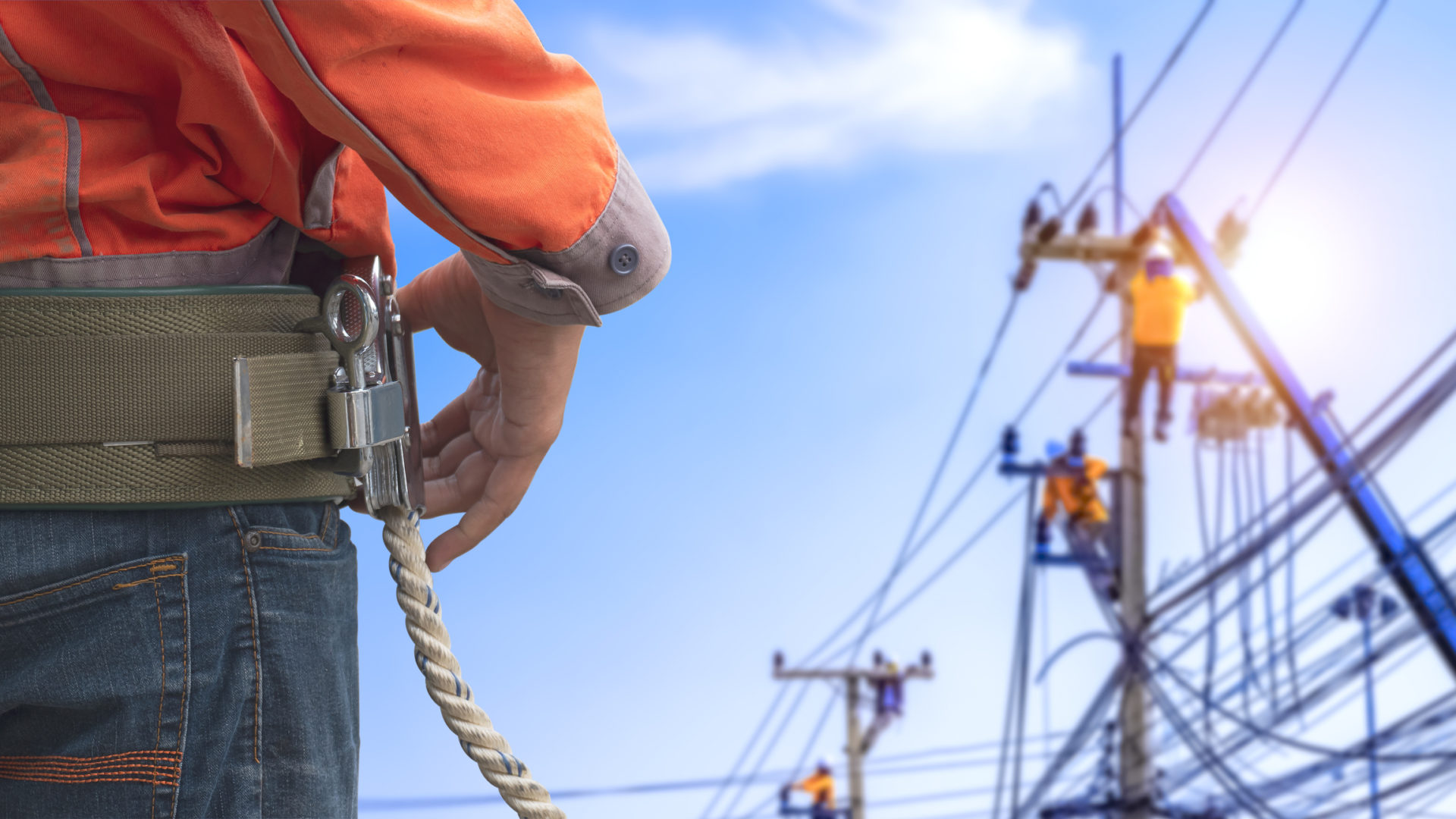Keep a Safe Distance-Power Line Safety
Keep a Safe Distance-Power Line Safety
Coming into contact with a power line can be dangerous – even deadly.
Working with or near power lines can expose workers to electrical hazards, but these dangers can be avoided through safe work practices.
These practical steps can prevent injuries from contact with power lines;Conduct a hazard assessment to identify and address potential safety hazards before work begins.
- Ask the electric company to de-energize and ground overhead power lines.
- Educate workers on safety procedures and requirements.
- Know the safe working distance for workers and equipment.
- Use non-conductive wood or fiberglass ladders.
- Wear personal protective equipment, such as rubber insulating gloves and insulating sleeves, and industrial protective helmets.

Dedicated spotter (power lines) – A qualified rigger IS NOT a qualified signal person unless they have attended training and successfully passed both a written (or oral) and practical examination. Therefore, a qualified rigger who is not a qualified signal person is not to be used as a dedicated spotter.
The power line owner/operator or registered professional engineer who is a qualified person with respect to electrical power transmission and distribution determines the minimum clearance distance that must be maintained to prevent electrical contact in light of the on-site conditions. The factors that must be considered in making this determination include, but are not limited to: Conditions affecting atmospheric conductivity; time necessary to bring the equipment, load line, and load (including rigging and lifting accessories) to a complete stop; wind conditions; degree of sway in the power line; lighting conditions, and other conditions affecting the ability to prevent electrical contact. Refer to OSHA Standard 1926.1410(c)(1)
If a tag line is used, it must be of the nonconductive type. Refer to OSHA Standard (1926.1410(d)(7) )
